Iran Sentences Four Baluchis To Execution for ‘Armed Rebellion’
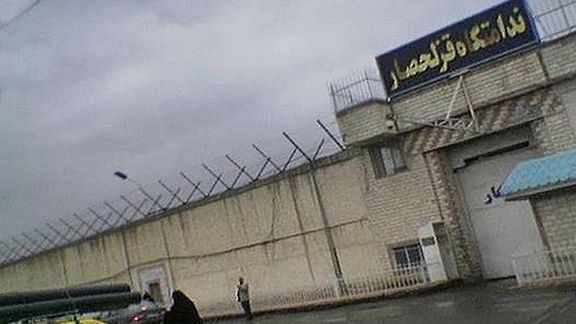
The Tehran Revolutionary Court has handed down death sentences to four Baluchis on charges of armed rebellion as crackdowns of dissidents in Iran continues.

The Tehran Revolutionary Court has handed down death sentences to four Baluchis on charges of armed rebellion as crackdowns of dissidents in Iran continues.
The men are currently imprisoned in Ghezel Hesar Prison in Karaj according to rights group Hengaw.
In addition to the cases, reports from human rights sources indicate that Pakhshan Azizi, a former Kurdish journalist and political prisoner, faces similar charges by the Iranian judiciary.
Furthermore, the Iranian Free Workers Union recently reported that Shahab Naderi, a political prisoner, has also been sentenced to execution by the Tehran Revolutionary Court on similar grounds.
Earlier reports from the Human Rights Activists News Agency (HRANA) revealed that in 2023, Iran witnessed the execution of at least 791 citizens, including 25 women and two child offenders, marking a significant increase of over 33% compared to the previous year.
Furthermore, UN experts disclosed in a separate report that Iran executed at least 834 people in the same year, with eight individuals linked to nationwide protests that commenced in 2022, triggered by the death of Mahsa Amini in morality-police custody for not wearing her hijab properly.
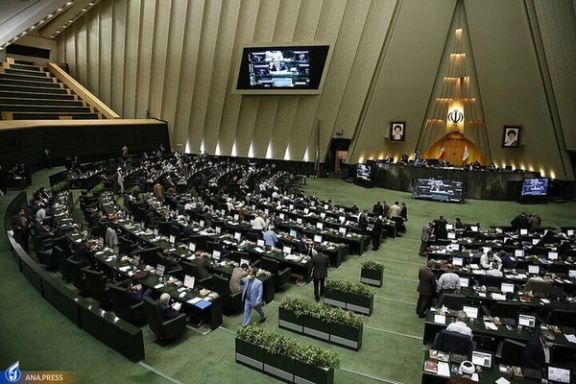
Hacktivist group Uprising till Overthrow has taken responsibility for the recent cyberattack on the Khaneh Mellat News Agency, the media arm of the Iranian Parliament.
In a statement released by the group, closely affiliated with the Albania-based opposition Mujahideen-e Khalq (MEK) organization, it was disclosed that the attack reached 600 of the the main servers of the parliament, commission servers, main chamber servers, parliament assistant servers, parliament bank server, and other servers related to administrative functions.
The timing of the cyberattack is notable as it coincides with the upcoming parliamentary elections, scheduled for March 1st, which have been marred by extensive disqualifications of candidates, raising concerns about the integrity of the electoral process.
This isn't the first time Uprising till Overthrow has targeted Iranian government agencies. In June, the group exposed documents from the Iranian presidential system, shedding light on activities of the Revolutionary Guards in suppressing protests.
In addition to Uprising till Overthrow, other hacking groups have also conducted successful cyber operations against Iran's infrastructure and government servers. Gonjeshk-e-Darande or Predatory Sparrow, for instance, disrupted gas station activities across Iranian cities in December through a cyberattack on fuel systems. Another group, Edalat-e Ali (Ali's Justice), hacked CCTV cameras in Evin Prison and targeted the Islamic Republic of Iran Broadcasting (IRIB) and the Judiciary in recent years.
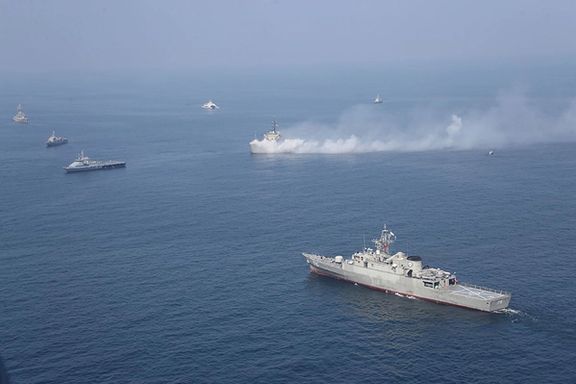
Iran claimed Monday to have “successfully” launched a long-range ballistic missile from a warship, underlining the regime’s rising belligerence amid a regional crisis.
“Nowhere is safe for those powers who seek to threaten our security,” IRGC commander Hossein Salami said in a thinly veiled threat to the United States and its allies, suggesting that Iran’s “ocean-liners” can get within range of any target.
Tasnim news released videos showing the launch of a missile from the deck of a vessel, however the type of the missile has not yet been verified. If true that a long-range ballistic missile was fired from a vessel, it would mark a significant moment, since Iran has always maintained that its military posture is purely defensive. But boasting about warships appearing “at any spot in the oceans” with long-range missiles is not.
So far, no images of a test has been revealed, and Iranian government media on Tuesday did not follow up on the claim, but Salami's statements shows the IRGC is pursuing some project the use ships as a launching pad for long-range missiles.
In the last few years, Iran has moved from a largely subdued, albeit disgruntled, regional power to one constantly flexing its muscles and daring confrontation –probably because it knows it will not get one.
At every turn in his term, President Joe Biden has made it clear that he’s not looking for conflict with Iran, specially since the October 7th Hamas attack on Israel. Around 170 attacks by Iran's proxies on US forces has not altered that US policy –not even after a drone strike in Jordan last month that killed three American soldiers and wounded many more.
President Biden did react to the loss, of course, authorizing a “multi-layered” strike on targets related to Iran’s IRGC in Iraq and Syria. But his critics were not satisfied. He had waited “too long”, they said, “telegraphing” the military’s intentions, which helped the IRGC move out of the way and avoid a costly embarrassment.
It is this cautious approach, Biden critics say, that has emboldened Iran to a dangerous degree.
Far more worrying than an unverified missile launch, however, and far more telling in terms of Iran’s growing belligerence, is Iran’s nuclear program.
On Monday, not long before Salami claimed a new missile test, Iran’s former head of Atomic Energy Organizations signaled that his country was closer than ever to a nuclear weapon.
In a televised interview, Ali-Akbar Salehi was asked about Iran’s capability to develop a nuclear warhead. He refused a direct answer but said, “think about what a car needs; it needs a chassis, an engine, a steering wheel, a gearbox. You ask if we've made the gearbox, I say yes. Have we made the engine? Yes, but each one serves its own purpose".
"We have [crossed] all the thresholds of nuclear science and technology,” he summed up.
Iranian officials have always insisted that the country’s nuclear program is peaceful, but experts including the head of the UN nuclear watchdog say enriching uranium to such levels as Iran has done (60%) cannot be justified or even explained by peaceful intentions.
Once more, Biden critics point at him and his administration.
“Iran is within weeks of testing nuclear weapons and the Biden Administration has helped make an additional $100 billion available to them since Biden took office to help fund the project,” said former White House official and Director of Allison Center for National Security. “We’re getting to the threshold in which only military force may be required.”
President Biden hoped (and tried from his first day in office) to revive the 2015 nuclear deal with Iran or forge some form of agreement to at least slow Iran’s march towards nuclear weapons. He abandoned Trump's ‘maximum pressure’ campaign against Iran, taking most threats off the table and looking the other way as Iran pocketed billions shipping oil to China. To top it all, the administration released billions in frozen Iranian funds.
But all it has received in return is more belligerence, more missiles and suicide drones –which, ironically, may force Joe Biden to enter a confrontation he’s tried so hard to avoid.
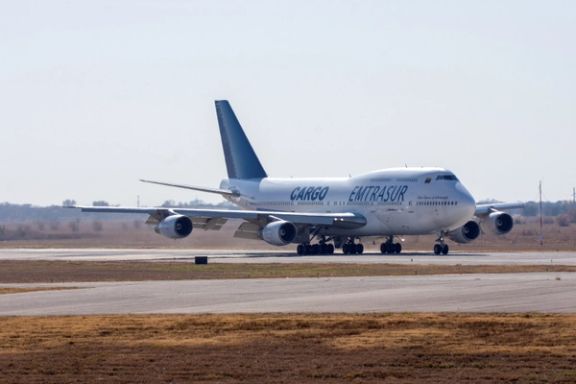
The US government has seized a Boeing 747 cargo plane, previously owned by an airline linked to Iran’s IRGC, which was grounded in Argentina in June 2022 on suspicion of illegal activities.
The Justice Department said Monday that the US-built plane had been brought to Florida and would be disposed of.
"The Justice Department is committed to ensuring that the full force of U.S. laws deny hostile state actors the means to engage in malign activities that threaten our national security," Assistant Attorney General Matthew Olsen, the head of the department's national security division, said in a statement.
Argentina grounded the 747 plane after its unannounced arrival from Mexico to an airport in Buenos Aires on June 8, 2022. The plane originally belonged to Iran’s Mahan airline affiliated with Iran’s Revolutionary Guard (IRGC) and sanctioned by the US for transporting arms to Syria and supporting terrorism.
The plane had arrived in Argentina with a crew of 19 people, including five Iranians, some with clear ties to the IRGC. Venezuela’s Conviasa national carier had bought or leased the plane from Mahan airlines in early 2022 and christened it ‘Louisa Caceres Arismendi.’
The United States accused the captain of the plane, Gholamreza Ghasemi of being an Revolutionary Guard office. Ghasemi claimed that he was a instructor, teaching the Venezuelan crew how to operate the 747.
Gerardo Milman, an Argentine lawmaker, told Iran International in June 2022 that Iranians aboard the Venezuelan plane planned “attacks on human targets.” Milman also alleged that Captain Ghasemi was a senior official of Qods (Quds) force.

The latest report from the Iranian government has revealed that housing price surges in Tehran show no signs of abating.
The annual inflation rate of apartments in the capital city has skyrocketed to 82.8 percent in the month of Dey (December 22 to January 20).
The Statistical Center of Iran, affiliated with the Organization of Planning and Budget, disclosed on Monday that the monthly housing inflation in Tehran for the month stood at 2.2 percent. The average price of apartments sold in the capital has surged to 806 million rials per square meter, equivalent to approximately $1,500.
The report also delineated the varying degrees of price hikes across Tehran's districts, with district one experiencing the highest increase and district 18 witnessing the lowest among the 22 districts.
The escalation in housing costs comes amid economic turmoil compounded by runaway inflation and a rapidly depreciating national currency. Iran's rial continues to plummet against the US dollar, with one US dollar now surpassing 550,000 rials, exacerbating the financial strain on citizens.
Furthermore, concerns over homelessness have been echoed by the Research Center of the Parliament, attributing the situation to "gross failures" within the housing system. Decades of policies, the center asserts, have disproportionately impacted low-income and vulnerable groups, exacerbating social inequalities.
In a country where real estate serves as a primary asset for safeguarding savings amidst currency devaluation, the surge in property prices underscores broader economic challenges. With the value of the national currency plummeting at least tenfold since 2017, Iranians are increasingly grappling with the erosion of their purchasing power and the imperative to safeguard their wealth amid economic uncertainty.

In an alarming development, Ali-Akbar Salehi, the former head of Iran's nuclear agency has implied in remarks broadcast on Monday that Iran has everything it needs for an A-bomb.
In a televised interview, Salehi, who was also foreign minister (2010-2013), was asked if Iran has achieved the capability of developing a nuclear bomb. Avoiding a direct answer he stated, "We have [crossed] all the thresholds of nuclear science and technology. Here's an example: Imagine what a car needs; it needs a chassis, an engine, a steering wheel, a gearbox. You're asking if we've made the gearbox, I say yes. Have we made the engine? Yes, but each one serves its own purpose," the senior regime insider said.
The likelihood of Iran acquiring nuclear weapons has been a prevalent concern for analysts and officials in the region and in Western countries, but recently the Islamic Republic has become more vocal about its military and nuclear progress. While Tehran insists that its nuclear program is peaceful, the regime has sped up its uranium enrichment to levels that serve no purpose other than building nuclear weapons.
The global community has been aware of Iran’s nuclear advancement, acknowledged in numerous reports by the United Nation’s nuclear watchdog, the IAEA. However, except US sanctions, other countries and the United Nations have taken no effective measures.
This is not the first time that officials of the Islamic Republic have claimed to have the ability to build a nuclear bomb. In July 2022, Kamal Kharrazi, the head of the Strategic Council for Foreign Relations of the Islamic Republic and a close advisor to Supreme Leader Ali Khamenei, said in an interview with Al Jazeera that Iran had the technical capabilities to build a nuclear bomb but does not intend to do so.

"We have increased the level of uranium enrichment from 20 percent to 60 percent in just a few days, and it can easily be enriched to 90 percent," Kharrazi said, implying that Iran is very close to making nuclear weapons.
His statement came as Mohammad Eslami, the head of the Atomic Energy Organization of Iran, has never dismissed the possibility of enrichment to the level required for bomb-making, reiterating that the decision for 90 percent uranium enrichment depends on higher authorities, meaning Khamenei.
In January, a TV host in Iran suggested on an IRGC-affiliated channel that it is perhaps time to produce nuclear weapons, sparking controversy. The host, Hossein Hosseini, said, "Is it not time for Iran to produce its first nuclear weapon, given the ongoing conflict against Gaza and repeated threats from Israel?" Eslami, in response, said that “the production of weapons of mass destruction has never been part of Iran's defensive doctrine and is not aligned with its foreign policy," despite the country's ongoing enrichment effort.
Islamic Republic officials have repeatedly stated that according to a fatwa (Islamic decree) by the Supreme Leader, the construction of an atomic bomb is not on Tehran's agenda. However, few in the international community believe in a fatwa that can be revoked at any moment.
In an interview with Iran International on February 8, leading nuclear weapons expert David Albright warned that this is the time when “Iran may decide to make nuclear weapons.”
“You have a situation where the security incentives for Iran to build nuclear weapons have increased,” he pointed out. “The transparency of the nuclear program has decreased significantly.. Their nuclear weapons capabilities have grown over the last several years… And it's also a point in time where people's attention is elsewhere. The Iran nuclear issue barely makes the newspapers these days.” In the past two decades, every US president has announced that a “nuclear Iran” will not be tolerated, often stressing that “all options are on the table” to prevent the regime in Tehran acquiring nuclear weapons. And in the meantime, Iran has advanced its nuclear capabilities in every respect.
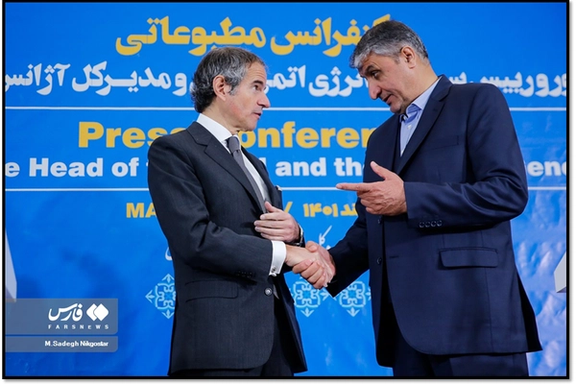
But Albright believes a “balancing act” is possible if the US and Israel move swiftly to make the regime understand “it's not in its interest to build nuclear weapons” before it reaches a definite conclusion that it has to have “nuclear deterrent” against the US and Israel.
“We're worried that the US and Israeli intelligence agencies are distracted,” Albright told Iran International, “and Israeli intelligence isn't foolproof, as this attack on October 7th proved in a very dramatic way.
According to Al Jazeera, “a confidential IAEA report released last month indicated that Iran’s estimated stockpile of enriched uranium had reached more than 22 times the limit" set out in the 2015 JCPOA accord between Tehran and world powers.
In June 2022, Iran removed all IAEA surveillance and monitoring equipment, needed to monitor the implementation of the 2015 JCPOA nuclear accord from its nuclear installations and since March it agreed to put them back on operation, but it has been stonewalling the process ever since.
IAEA Director-General Rafael Grossi said in December that inspectors “confirmed…an increased production of highly enriched uranium at both of Iran’s main nuclear facilities.” Speaking to Bloomberg on the sidelines of the World Economic Forum in Davos in January, Grossi reiterated his concerns that no technical obstacle remains between Iran and a nuclear bomb, implying that the regime can make them now if it wanted to.
Condemning Iran's advancement, the US said the December 26, 2023 report by the IAEA highlighted that Iran has increased its rate of production of uranium enriched up to 60% at Natanz and Fordow to levels observed between January and June 2023. "These findings represent a backwards step by Iran and will result in Iran tripling its monthly production rate of uranium enriched up to 60%."